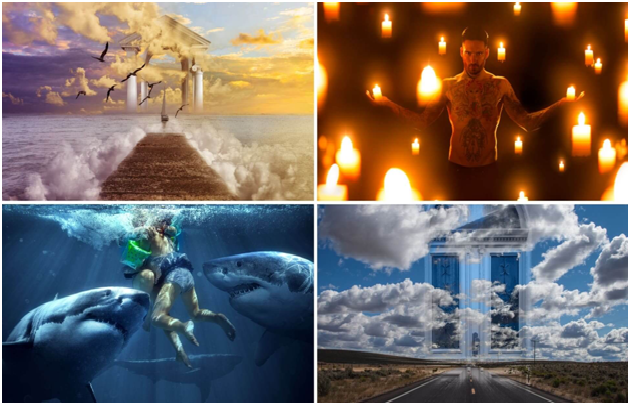In the emotive empire of visual media and films, the mastery of Advanced Visual Effects (VFX) techniques stands as a hallmark of artistic ingenuity and technical prowess. As technology ripens, so too do the prospects for creating immersive and exquisite 3D effects that transcend the boundaries of imagination. This blog goes into the intricate world of Advanced VFX Techniques, laying the groundwork for aspiring creators and seasoned professionals alike. we shall address the intricacies of lighting, texturing, rendering, and animation, each playing a pivotal role in shaping the visual tapestry of modern media and film industry. From the subtle interplay of light and shadow to the intricate dance of particles and special effects, every element converges to breathe life into virtual worlds.
Foundations of Advanced VFX:
In visual effects (VFX), the foundations of Advanced VFX are paramount. These principles serve as the scaffolding upon which captivating digital realms are built, with 3D modeling standing as a central pillar in this creative process.
At the core of Advanced VFX lies the intricate art of 3D modeling and rendering, where digital artists sculpt virtual objects with precision and finesse. This process breathes life into imaginative concepts, transforming them into tangible entities within the digital landscape.
Understanding the Foundations of Advanced VFX entails delving into a myriad of techniques and concepts. It involves mastering software tools, refining skills in texture mapping, and harnessing the power of lighting and rendering techniques. Moreover, it demands a fusion of technical prowess and artistic vision, as creators strive to blur the lines between reality and imagination.
Exploring 3D Rendering Technologies:
Exploring 3D Rendering Technologies opens a gateway to the immersive and visually stunning worlds of digital artistry. At its essence, 3D rendering is the process of transforming raw geometric data into lifelike images through sophisticated algorithms and computational power.
Modern advancements in rendering technologies have revolutionized the way we perceive digital imagery. From ray tracing to global illumination, each innovation brings us closer to achieving photorealistic representations of virtual environments.
One of the most significant breakthroughs in recent years is real-time rendering, empowering creators to interactively manipulate scenes and witness instant feedback during the design process. This not only accelerates production timelines but also fosters a more iterative and collaborative approach to content creation.
Moreover, advancements in hardware acceleration and cloud computing have propelled rendering speeds to unprecedented levels, enabling complex simulations and high-fidelity visuals on a scale never before imagined.
Lighting and Shadows:
Lighting and Shadows is the hallmark of visual storytelling, where the interplay of light and shadow breathes life into digital landscapes, evokes emotions, and enhances realism.
Lighting serves as a powerful tool for setting the mood and tone of a scene, directing the viewer’s focus, and conveying depth and dimensionality. Whether natural or artificial, the placement, intensity, and color of light sources profoundly impact the visual narrative, creating dramatic contrasts or subtle nuances that elevate the storytelling experience.
Equally crucial are shadows, which add depth, texture, and context to objects within a scene. By manipulating shadow patterns and opacity, creators can imbue scenes with a sense of mystery, drama, or tranquility, enhancing the overall atmosphere and immersing the audience in the narrative.
Mastering Lighting and Shadows requires a keen understanding of light physics, composition, and artistic intuition. It involves experimenting with different lighting setups, shadow-casting techniques, and post-processing effects to achieve desired visual outcomes while maintaining visual coherence and believability.
Understanding Textures and Materials:
Textures and materials infuse digital surfaces with characteristics mirroring the physical world—roughness, smoothness, reflectivity, and transparency—defining objects’ visual identity and evoking emotional responses. Textures, surface properties on 3D models, range from intricate patterns to imperfections, breathing life into virtual objects. Meticulously crafted textures transform bland surfaces into dynamic elements, sparking imagination. Materials dictate surface interactions with light and shadow, impacting appearance across lighting conditions—matte to glossy, metallic to translucent—shaping mood and storytelling potential.
Understanding Textures and Materials demands technical prowess and artistic intuition, mastering software tools for texture mapping, UV unwrapping, and material shaders. It also requires an eye for texture resolution, color accuracy, and surface properties. This blend of skills empowers artists to craft immersive digital worlds that captivate and resonate with audiences.
Diligent Camera Techniques in VFX:
Active Camera Techniques in VFX are pivotal for immersive storytelling, enriching narratives, and captivating audiences in digital realms. From tracking shots to aerial sweeps, dynamic camera movements infuse vitality and fluidity, enhancing emotional resonance and spatial dynamics within the story. By manipulating angles, filmmakers evoke empowerment or vulnerability, shaping audience perceptions and intensifying dramatic impact. Incorporating nuances like camera shake and depth of field effects heightens realism, drawing viewers deeper into the cinematic experience.
Utilizing Dynamic Camera Techniques demands technical proficiency, creative insight, and narrative finesse. It entails utilizing advanced equipment, motion capture, and post-processing to craft visuals that resonate emotionally. Through these techniques, filmmakers transcend storytelling boundaries, creating persuasive narratives that echo with audiences on a deep level.
Integrating CGI Elements with Real Footage:
Integrating CGI Elements with Real Footage seamlessly merges digital creations with live-action scenes, crafting captivating visual experiences. This intricate process blends reality with imagination, whisking audiences to fantastical realms while preserving believability and immersion. Meticulous planning aligns camera angles, lighting, and perspective, ensuring seamless integration. CGI artists meticulously craft digital assets, focusing on lighting, shadows, and reflections for coherence.
Advanced rendering techniques heighten realism, allowing CGI to blend seamlessly. During compositing, artists overlay CGI, adjusting color grading and motion blur for cohesion. Techniques like rotoscoping and matte painting blend CGI with the environment, enhancing immersion—a harmonious blend of natural and digital, transcending reality’s constraints. By integrating CGI with actual footage, filmmakers ignite storytelling possibilities, pushing visual boundaries with creativity and innovation.
Applying Special Effects and Particle Systems:
Making use of Special Effects and Particle Systems is a dynamic process empowering filmmakers to craft awe-inspiring visuals, immersive environments, and breathtaking moments in their productions. Special effects, spanning practical effects, CGI, and digital enhancements, add layers of realism and spectacle, enriching cinematic experiences. Particle systems, fundamental to special effects, simulate natural phenomena like fire, smoke, and explosions, enhancing realism and character interactions.
From blockbuster action sequences to fantastical realms, harnessing special effects and particle systems brings creative visions to life. These techniques enable the creation of epic battles, otherworldly landscapes, and supernatural powers, unlocking limitless storytelling possibilities.
Moreover, technological advancements democratize special effects and particle systems, enabling independent filmmakers to rival major studios. Accessible tools and software empower creators to push visual storytelling boundaries in unprecedented ways.
The Future of Advanced VFX: Trends and Innovations
The Future of Advanced VFX heralds a new era of creativity and innovation driven by technological advancements. Real-time rendering technologies, propelled by powerful GPUs and engines, enable visualizing complex scenes with unprecedented speed and precision, fostering creative exploration.
The fusion of AI and Advanced Visual Effects (VFX) revolutionizes content creation and post-production workflows, automating tasks and enhancing image quality. AI-powered tools streamline production pipelines, reduce costs, and push storytelling boundaries.
Furthermore, immersive technologies like VR and AR blur digital and physical worlds, offering unprecedented storytelling experiences. Audiences immerse themselves in favorite movies, interact with virtual characters, and explore fantastical environments.
Conclusion:
In conclusion, the future of advanced VFX holds immense promise, driven by innovative trends and emerging technologies. From real-time rendering to AI integration, the convergence of these advancements is reshaping the terrain of visual storytelling. As we peer into the horizon, the significance of 3D modeling stands as a emblem to the core foundation of VFX, enabling artists to sculpt immersive worlds and bring imaginative concepts to life. With creativity as our compass and technology as our tool, the road ahead is one of limitless possibilities, where the boundaries of imagination are surpassed, and the magic of storytelling continues to evolve.























